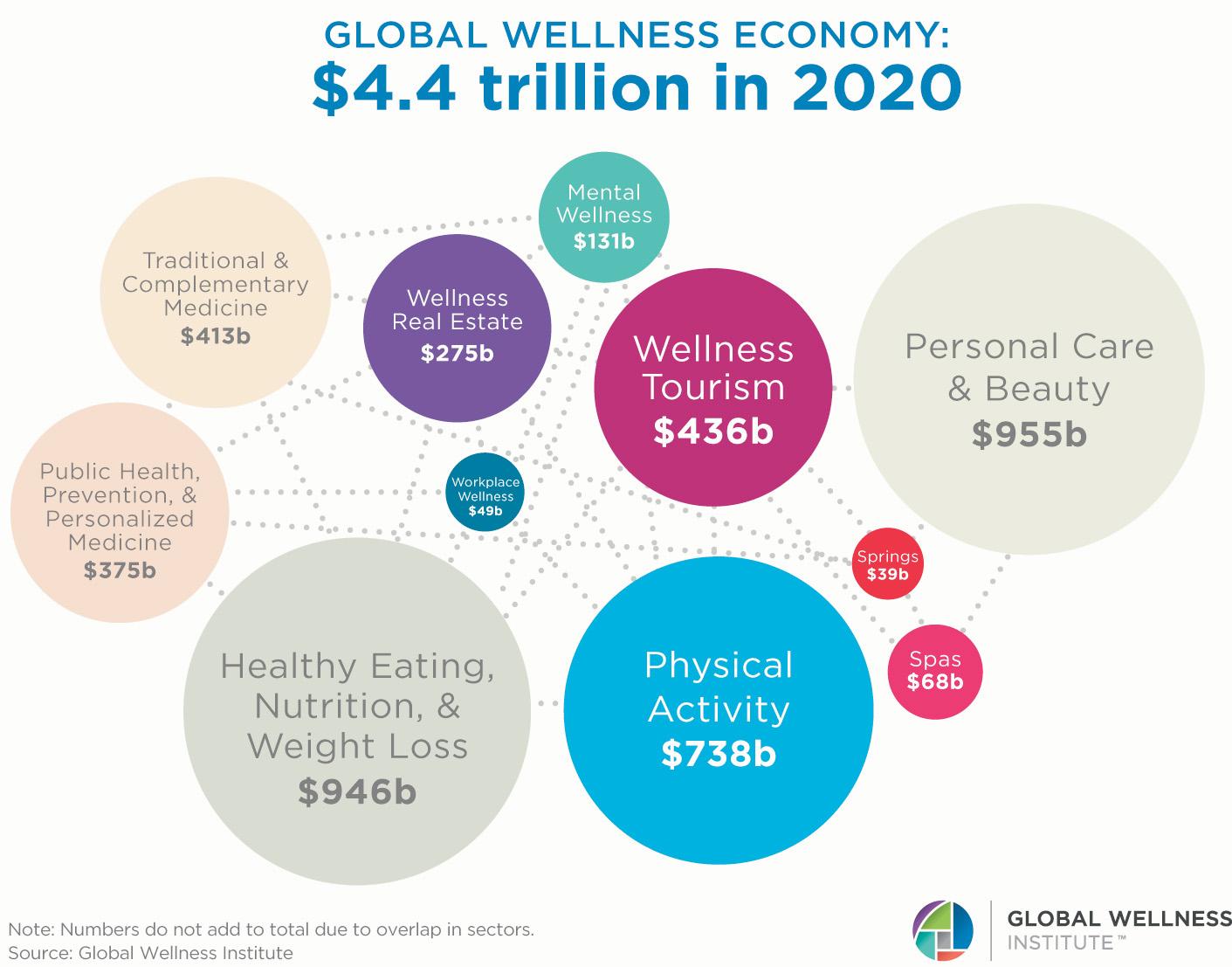
11 minute read
Festive Marketing Ideas and LNE Advent Calendar Five questions with Omar Romero, Chief Development Officer
The Global Wellness Economy Stands at $4.4 Trillion Amidst the Disruptions of COVID-19; Is Forecast to Reach $7 Trillion by 2025 By Global Wellness Institute
New Global Wellness Institute research–the most in-depth in its history–reveals that the wellness market grew to a record $4.9 trillion in 2019 and then fell to $4.4 trillion in the pandemic year of 2020. But with a consumer “values shift” underway, the future of the wellness market is incredibly bright, predicted to grow 10% annually through 2025
Advertisement
The nonprofit Global Wellness Institute (GWI) unveiled its much-anticipated research report, “The Global Wellness Economy: Looking Beyond Covid”, which provides new global market data on the overall wellness economy and for each of its eleven sectors. The report answers the big questions: How did the shock of COVID-19 impact the wellness industry? Which wellness markets fared best and worst? What is the future of the wellness economy–and why?
The GWI last measured the wellness industry at $4.3 trillion in 2017, and the new research reveals that it grew to historic levels in the two years before the pandemic, reaching $4.9 trillion in 2019. With the massive economic shocks from COVID-19, the global wellness economy fell 11%, to $4.4 trillion, in 2020. But with the pandemic ushering in a major shift in values for consumers, governments, and the medical world–where prevention and wellness take on far greater importance–the GWI predicts that the wellness market will return to pre-pandemic levels in 2021 ($5 trillion), and will grow at an impressive 10% annual pace through 2025, when it will reach $7 trillion.
The report, provides detailed numbers and analysis for all eleven wellness sectors: pre-pandemic, pandemic, and future growth rates; rich regional and national data; and the major trends that will impact each sector post-COVID.
“This research update is crucial, because 2020 is the watershed year that will forever divide history–and the trajectory of the wellness economy–into ‘before’ and ‘after’ COVID-19,” said Ophelia Yeung, GWI senior research fellow. “When we analyze how different wellness markets performed in the last year, it’s natural to want to compare them and label winners and losers. But there is no question that wellness–as a concept, as a lifestyle priority, and consumer value–is a big winner from the pandemic.” Key Findings:
The momentum for wellness is evident in the strong pre-pandemic growth rates for every sector between 2017 and 2109.In those years, the wellness economy grew 6.6% annually, a significantly higher rate than global economic growth (4%). In the pandemic year of 2020, the wellness economy contracted by 11%. Unsurprisingly, sectors requiring a physical presence and/or full immersion for the actual experience, including physical activity, wellness tourism, spas, and thermal/mineral springs, saw the biggest pandemic declines–while healthy eating/nutrition/weight loss, wellness real estate, mental wellness, and the public health/ prevention/personalized medicine category all showed strong pandemic growth. markets from 2017 to 2019 (8.1% growth), and it also shrank the least during the pandemic (-6.4%). Conversely, North America was the fastest-growing wellness region from 2017 to 2019 (8.4%), but among the hardest hit by the pandemic (-13.4%).
The wellness economy will grow an extremely robust 60% from 2020-2025, with most segments projected to exceed GDP growth across those years. Markets with the highest growth projections (wellness tourism, thermal/mineral springs, spas) are those that took the greatest hits in 2020. Sectors that showed positive pandemic growth, including wellness real estate and mental wellness, are forecast to see powerful, ongoing market expansion.
Wellness Market Snapshots:
Wellness Tourism: Grew 8% annually from 2017 to 2019 (reaching $720 billion) and then took a major hit in 2020. The market shrunk -39.5% to $436 billion, while wellness trips dropped from 936 million to 601 million. The impressive 21% annual growth rate projected for wellness tourism through 2025 reflects new traveler values (a quest for nature, sustainability, mental wellness) as well as a period of rapid recovery from pent-up demand in 2021 and 2022.
Thermal/Mineral Springs: One of the fastestgrowing wellness markets from 2017 to 2019, with revenues rising to $64 billion (6.8% annual growth). Hit hard by the pandemic, revenues fell -39% in 2020, shrinking the market to $39 billion. There are now 35,099 hot springs establishments across 130 countries, with very strong 18% annual growth is expected through 2025, with 140-plus new projects in the pipeline.
Spas: From 2017 to 2019, the spa industry was growing at a fast 8.7% annual rate and reached $111 billion in revenues across 165,714 spas–with a big jump in hotel/resort spas (from 48,248 to 60,873). The high-touch industry got hit hard in 2020: Revenues fell by -39% (to $69 billion) and spa establishments dropped to 160,100 (with a loss of over 4,000 day spas). But the industry is expected to recover fast, with the market growing 17% annually through 2025, and doubling revenues (to $150.5 billion).
Wellness Real Estate: COVID-19 dramatically accelerating the understanding of the role that the built environment and our homes play in our physical and mental health, the wellness real estate market was the #1 growth-leader both before and during the pandemic: The market grew from $148.5 billion in 2017 to $225 billion in 2019 to $275 billion in 2020 (22% annual growth). Wellness residential projects skyrocketed from 740 in 2018 to over 2,300 today. Wellness real estate will continue its growth surge: The market will double to $580 billion from 2020 to 2025.
Physical Activity: This six-sector market grew 5% from 2018-2019 (to reach $874 billion), but revenues fell 15.5% in 2020. The fitness subsector (gyms, studios, classes) suffered a severe -37% revenue decline in 2020. Fitness technology was, of course, the bright spot, exploding 29% in 2020 to become a $49.5 billion market–with digital apps, streaming and on-demand workout platforms surging 40%. Mental Wellness: Posted strong 7% growth from 2019-2020 (from a $122 billion to a $131 billion market), as consumers desperately sought solutions to help them cope with pandemic stresses. The largest segment, “senses, spaces and sleep,” grew 12.4%, while the smallest segment, meditation and mindfulness, grew the fastest (25%). The forecast: strong 10% growth annually through 2025, to reach $210 billion.
Personal Care & Beauty: Consumer spending expanded from $1 trillion in 2017 to $1.1 trillion in 2019, and then declined by 13% in 2020. In 2020, Spending will bounce back post-pandemic, with 8.2% annual growth through 2025.
Traditional & Complementary Medicine This market spans different holistic, indigenous, ancient therapies and products. It grew from $376 billion in 2017 to $432 billion 2019, but contracted to $413 billion in 2020. It will see healthy 7% annual growth from 2020-2025, reaching $583 billion.
Healthy Eating, Nutrition & Weight Loss : One of the few wellness sectors that maintained positive growth (3.6%) during the pandemic, which launched a wave of interest in home cooking, healthy food, and immunity-focused foods and supplements. The sector grew from $858 billion in 2017 to $912 billion in 2019 to $945.5 billion in 2020–and is forecast to grow 5% annually through 2025, to reach $1.2 trillion.
Public Health, Prevention & Personalized Medicine: Another sector that saw positive pandemic growth (4.5%), largely because many governments and healthcare systems ramped up their public health during the COVID-19 crisis. The sector grew from $328 billion in 2017 to $359 billion in 2019 to $375 billion in 2020. With painful lessons from the pandemic about the terrible costs of underinvesting in public health, the segment is forecast to grow 5% annually through 2025.
Workplace Wellness: This segment grew 4.6% annually from 2017 to 2019–reaching a market high of $52.2 billion–but then shrank 7% in 2020, to $48.5 billion. Companies are recognizing that a compartmentalized, programmatic approach to employee wellbeing is not effective in tackling the challenges of stress, work-life balance, and mental health, so many are shifting to more meaningful, holistic approaches encompassing everything from changing company culture to focusing on the built environment. These expenditures cannot be measured as “workplace wellness,” so expenditures may decline even as the focus on employee wellbeing actually expands.
“The wellness economy will grow to $7 trillion in 2025, because the forces that have been driving it remain as powerful as ever: an expanding global middle class, an aging population, and rising chronic disease,” said Katherine Johnston, GWI senior research fellow. “But the pandemic has brought new shifts and a global ‘values reset’: ‘Wellness’ now means a growing focus on mental wellbeing and the importance of work-life balance, social justice, environmental sustainability, the built environment, and public health. These drivers will underpin the recovery of the wellness economy; they will also shift consumer, policy and healthcare spending in new directions.”
Festive Marketing Ideas

#1. Festive Salon Selfies Simply hang an empty picture frame on the wall. Add some Christmas spirit with traditional holly, ribbons and baubles, or if your salon has a contemporary feel, echo this styling in the decorations. Now invite clients to pose and preen in front of it.The result: umpteen eye-catching miniadvertisements splashed all over social for free. A festive fun #SalonSelfie.
#2. Quick yet effective Christmas advertising Two easy in-salon marketing ideas you’ll love: • Advertise your salon Christmas promotions and festive opening hours on your voicemail. •Replace the standard print-out on your till receipts with your festive specials, offers and opening hours. sure all these clients are encouraged to post online reviews. Word-of-mouth is one of the best ways to attract new clients and these glowing online reviews will help reduce salon downtime come January. Reviews will also build your business brand locally.
#4. Seasonal salon muse Your clients are hungry for original gift ideas and festive inspiration at this time of year. People rarely buy what they need. Tempt them into buying by transforming your salon into a glitzy Christmas promotion for your services and retail. Create striking merchandising displays. Carry on marketing: post attention-grabbing photos of your retail displays on your social media and website. to tempt last-minute purchases. Drop a heavy hint with a clear label: ‘ideal stocking-fillers’.
#6. ‘Tis the season for salon sparkle 1. Your salon interior: Decide on this year’s festive theme. Hanging graphics, posters and banner stands can all be highly personalised (use your own #hashtags on in-salon graphics to reflect your social marketing).
2. Your salon exterior: Act now to get your business noticed and encourage passers-by to pop in hunting for hair and beauty gifts, and last-minute stocking fillers. Transforming your shop windows into an eyecatching Christmas advertisement takes planning.
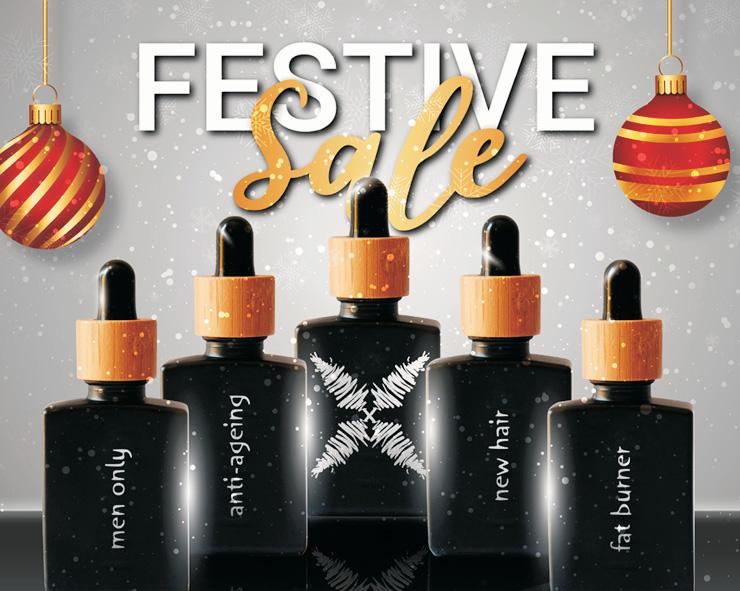

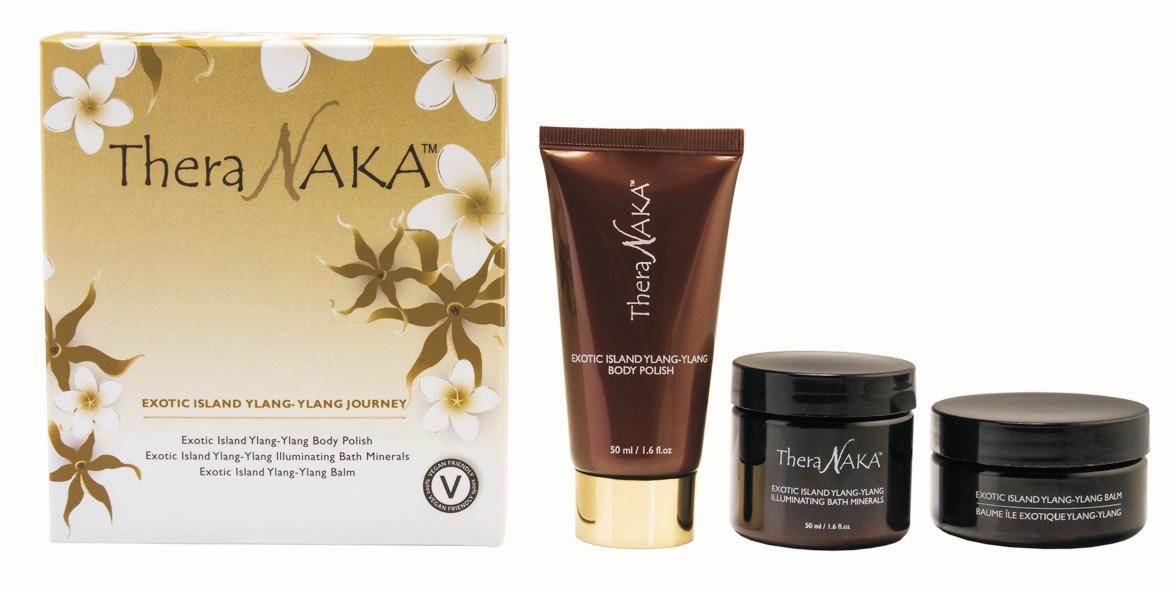
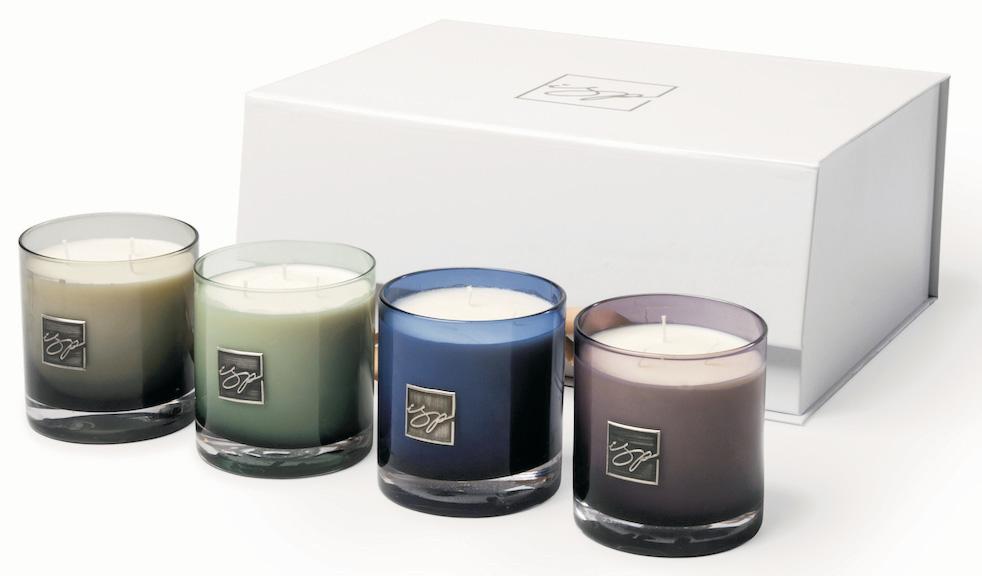
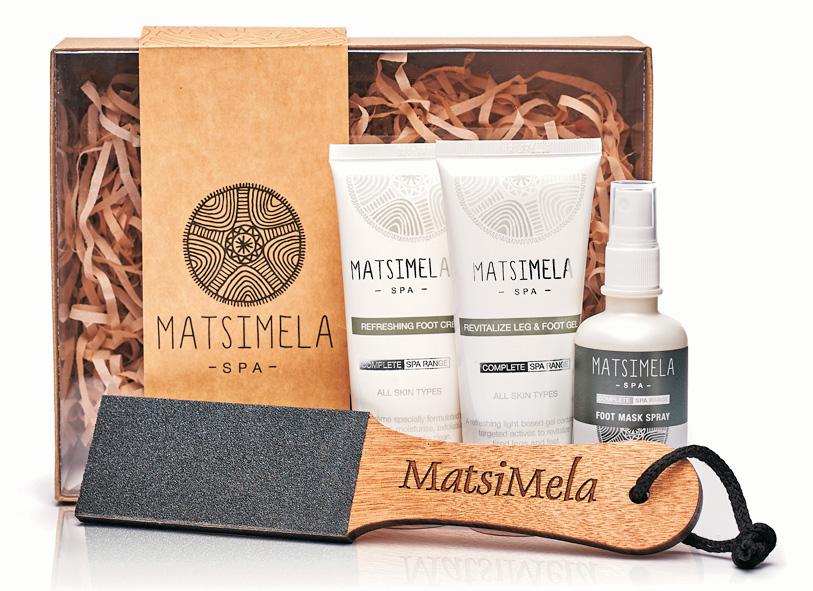
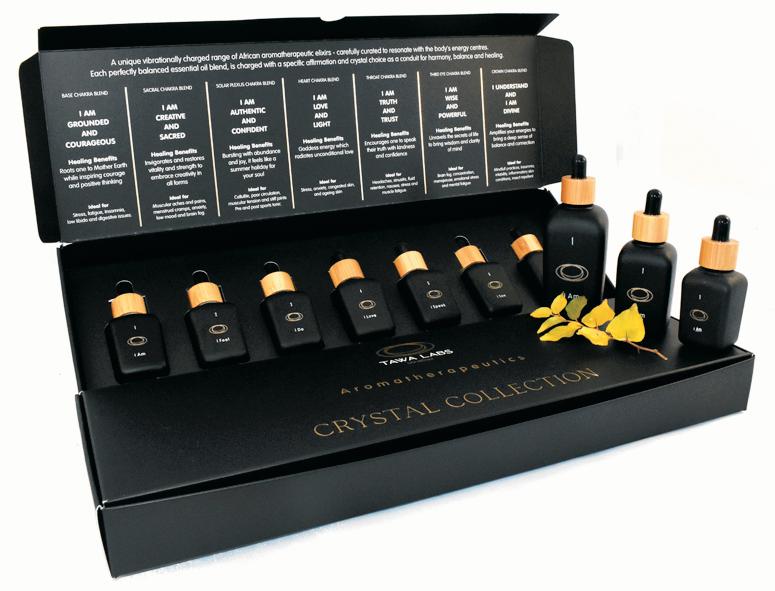


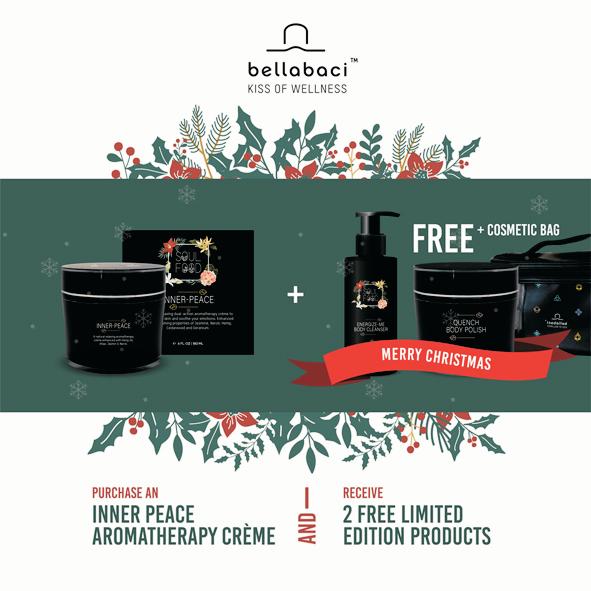
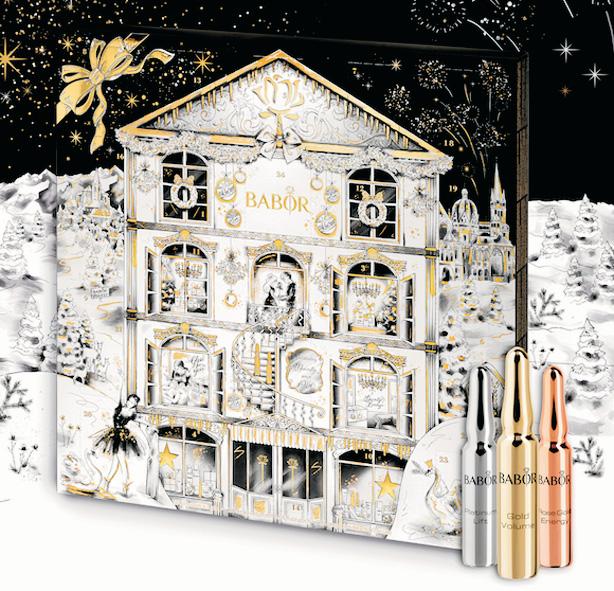
offers throughout your salon or clinic: •Invest in frames and display boards for your reception, beauty treatment rooms, hair styling stations, nail bars. •If you have digital signage/screens in your salon use these to promote re-booking offers for new year and holiday specials.
#8. Ho-ho-ho-lidays! Partnering with other local businesses is an effective and easy-on-the-pocket way to market your salon business. Always try to link up with businesses which target a similar audience to your salon or spa.
#9. Season’s Greetings Christmas is an opportunity to thank your loyal clients, reward them and get them booked in for January. I like rewarding loyal clients with a salon Gift Card. Did you know over 60% of gift card holders spend more than the total value of the original card? #10. We’ve got Christmas wrapped up I bought a birthday card for a friend last week and while in the shop noticed a book I knew she’d love. When I went to pay, the assistant asked if I’d like the book gift wrapped. I left that shop clutching my beautifully wrapped, beribboned package, a truly delighted client.So use the opportunity to create a lasting impression in the minds of your clients and you’ll turn a happy client into a ‘wowed’ one.
#11. Your Christmas salon playlist Spend some time on your Christmas playlist. Is the right fit for your target audience or have your team chosen a mixed bag of their personal favourites?
#12. Christmas spirit Christmas is all about giving. Team up with your suppliers and local businesses and host a raffle for your favourite charity. Promote in salon. And don’t forget to promote it online, and on social media. #13. Salon Gift Vouchers are Ideal Present Why do so many salons undervalue Gift Vouchers? They are a brilliant marketing tool for hair and beauty businesses.
#14. Get the party started Ring the changes with your Christmas drinks menu. Don’t just serve the old standbys of wine or festive fizz, try some celebratory fun cocktails, like Christmas Negroni, Winter Sidecar or Little Tickle anyone?
#15. A festive twist Serving Christmas cupcakes, festive chocolates or mini mince pies throughout December? Go on an urban foraging trip to discover some easy, yet different, alternatives to those boring pre-packed biscuits. Opening on Sundays during the run-up to Christmas? Think about creating a more leisurely atmosphere Change the music tempo, the drinks menu and perhaps offer light brunch for a chilled Sunday morning.










